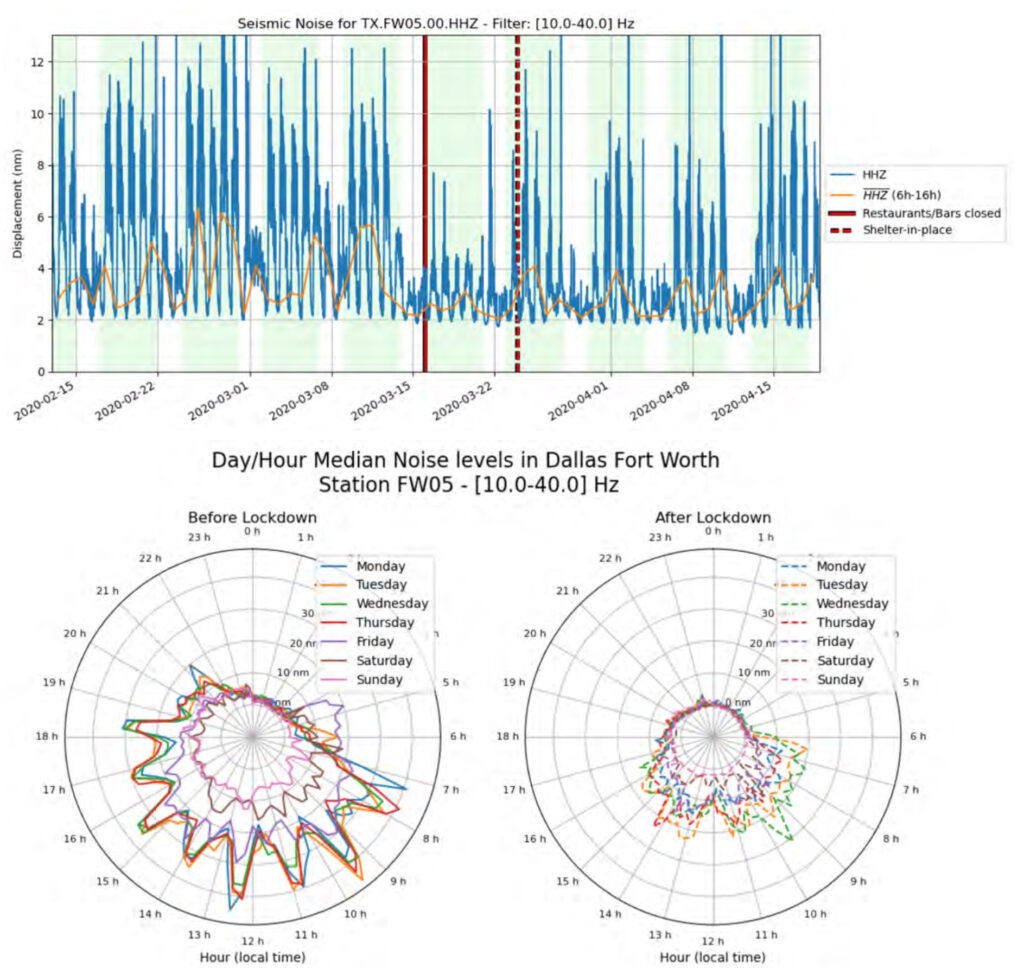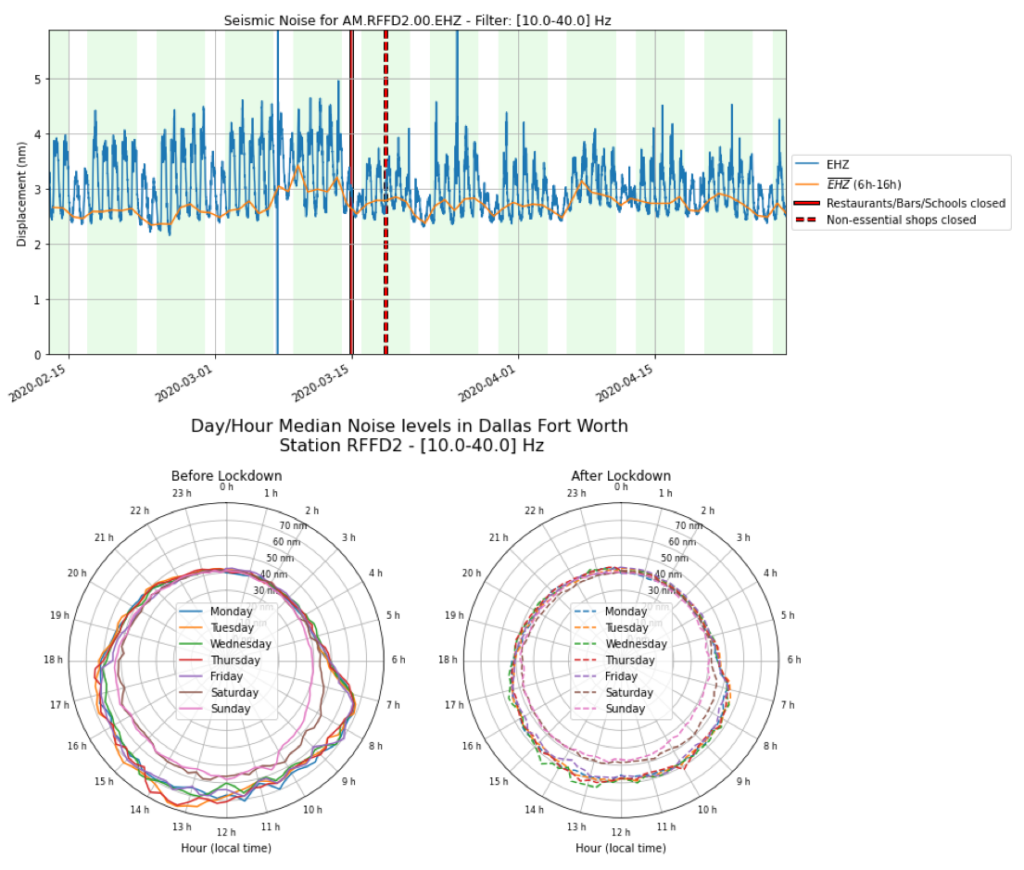While most seismometers have been installed to detect earthquakes, they are also very sensitive to ambient vibrations caused by human activity. A series of recent news reports have highlighted the change in background seismic vibrations (seismic ‘noise’) with the various government restrictions on human movement (see this link). Seismic stations in Dallas, many deployed following swarms of earthquakes in the 2000’s and 2010’s (see DeShon et al., 2019; Savvaidis et al., 2019), also show the local change in background noise. For my class on ‘Forensic Seismology and Acoustics’ this semester, we analyzed data from these stations to explore the effect of the shelter-in-place order on ambient seismic noise.
We started with a station on the campus of UT Dallas in the northern suburbs of Dallas. The station, which forms part of the TexNet seismic network (https://www.beg.utexas.edu/texnet-cisr/texnet) shows a clear change in seismic noise following the shelter-in-place order for Dallas county on March 24th. Using open-source scripts written by Thomas Lecocq at the Royal Observatory in Belgium, and leveraging open-source seismic software in Python (ObsPy), we processed the data to compute noise levels as a function of time. The results, shown in the figure below, clearly indicate that seismic noise has systematic trends with time that are noticeably different after COVID-19 restrictions.

At SMU, we operate a Raspberry Shake seismometer in the basement of the Heroy building that houses our department. The seismometer sits in the basement of a building that also contained a seismometer that was part of the very first global network of seismic stations (the WWSSN network)! As at UT Dallas, we see a difference in seismic background noise after restrictions were put in place (see the figure below).

University at the start of the 2020 COVID-19 pandemic
So we see changes in ground vibration caused by COVID-19 restrictions, which is neat, but perhaps more importantly could provide a scientific benefit. In particular, changes in noise may provide the opportunity to learn more about the causes and characteristics of urban seismic noise. For example, a recent study in London (Green et al., 2017) found that a strike by underground workers helped to identify spectral signals caused by the metro (or ‘tube’) from signals caused by traffic and other sources. Noisy urban environments are poorly understood from a seismic perspective, because it makes sense to put seismic instruments in quiet places to detect earthquakes. However, seismic measurements in urban environments are of critical interest in understanding seismic hazard in places where increasing numbers of people live. Information from seismic noise can play a key role in improving our understanding of hazards in urban environments.
DeShon, H. et al., Seism. Res. Lett., 91, doi: 10.1785.0220180269
Green, D. et al., Seism. Res. Lett., 88, doi: 10.1785/0220160128
Savvaidis, A. et al., Seism. Res. Lett., 90, doi: 10.1785/0220180350